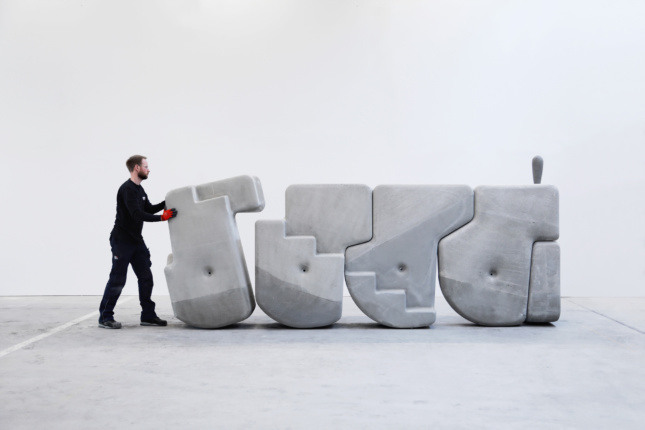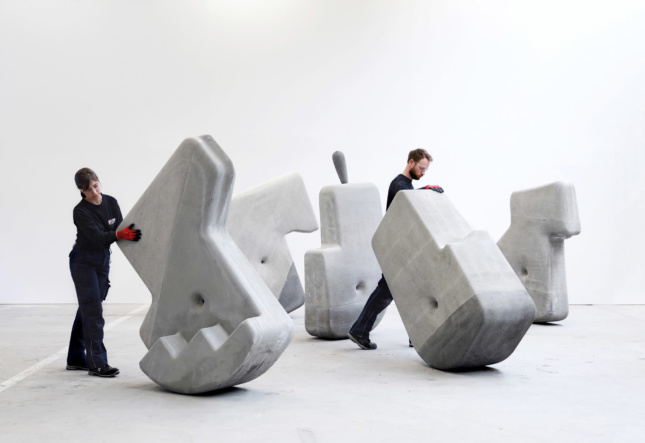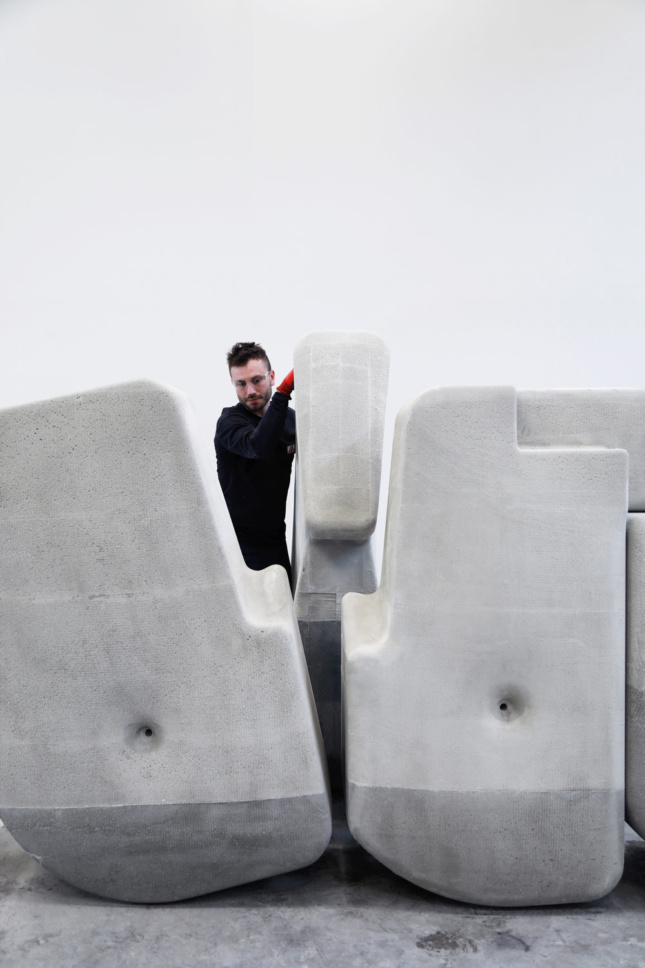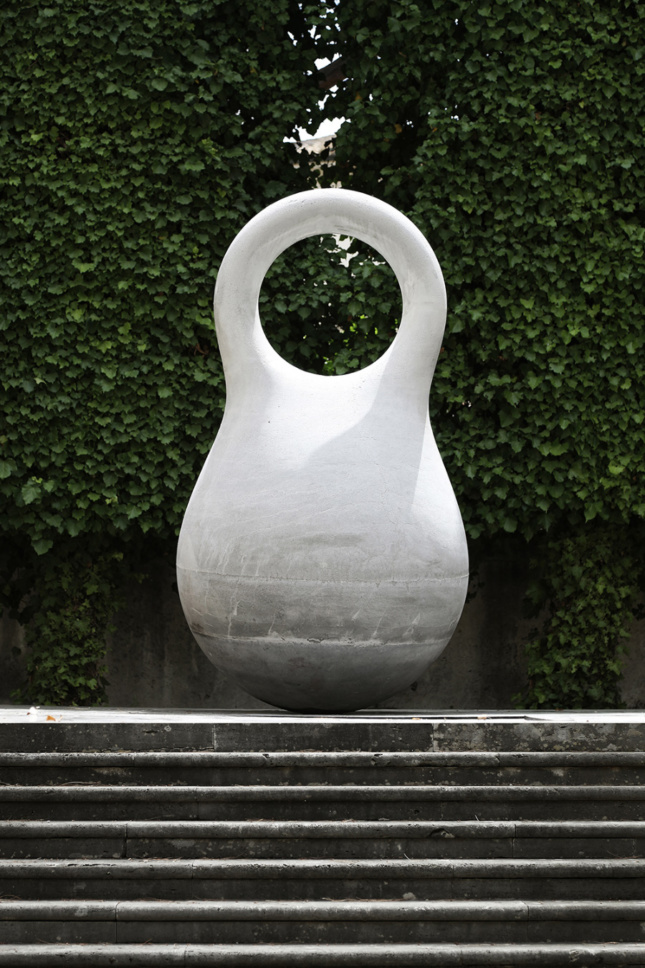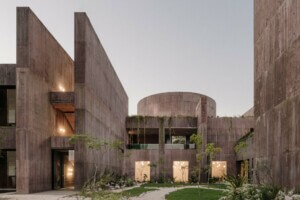TED 2019, a week of speaker sessions, workshops, and conversations about the directions technological and political progress are leading society, has touched down in Vancouver. Appropriately enough, the Cambridge, Massachusetts–based firm Matter Design and CEMEX Global R&D have used the event to unveil the fruits of their concrete research.
Matter Design is no stranger to experimental stonework (nor is CEMEX, for that matter). Engineering tightly-interlocking slabs and complex concrete forms have been a constant in their research, and both Janus and Walking Assembly take their explorations to the next level.
Janus was originally revealed simultaneously last year at the American Academy in Rome and on the campus of MIT. Matter Design and CEMEX teamed with composers Federico Gardella and Simone Confort to create a multi-sensory experience that demonstrates how heavy masses can still move with a rollicking sense of joy.
In a video of the display of Janus, a crescendo of whispers draws the crowd’s attention to the stage, where they’re presented, in both senses of the word, with an enormous box mocked up to resemble Rome’s four-gated Arch of Janus. The blue, orange, and pink box slowly flops over to reveal that it’s simply a wrapper, and from it emerges a massive concrete wrecking ball, or kettle ball–shaped object. Emphasizing the split nature of the Roman god that Janus takes its name from, the concrete object, a solid ball with a hollow handle on top, wobbles and spins but always returns to an upright position.
Walking Assembly continues on the theme of playfully rocking solid concrete masses with another historical twist. How did ancient peoples move the Moai of Easter Island? One theory is that these massive statues were designed to be “walked,” or gradually rocked, into place. Walking Assembly, seeking to divorce the concept of masonry’s scale from that of the humans placing it, returns to these preindustrial construction techniques.
These massive masonry units (MMUs) are designed to be moved and fit into place without the help of cranes or other construction equipment. Using rounded edges, handle points, and by pouring variable-density concrete to control each MMU’s center of gravity, the components can be easily rocked, tilted, and rolled into place.
Both projects, through using computer modeling and advanced fabrication technology, force the objects themselves to do the heavy lifting and free the user, or construction worker, to play around with the components. It’s a fitting tie-in for a conference probing where technology can take us.








